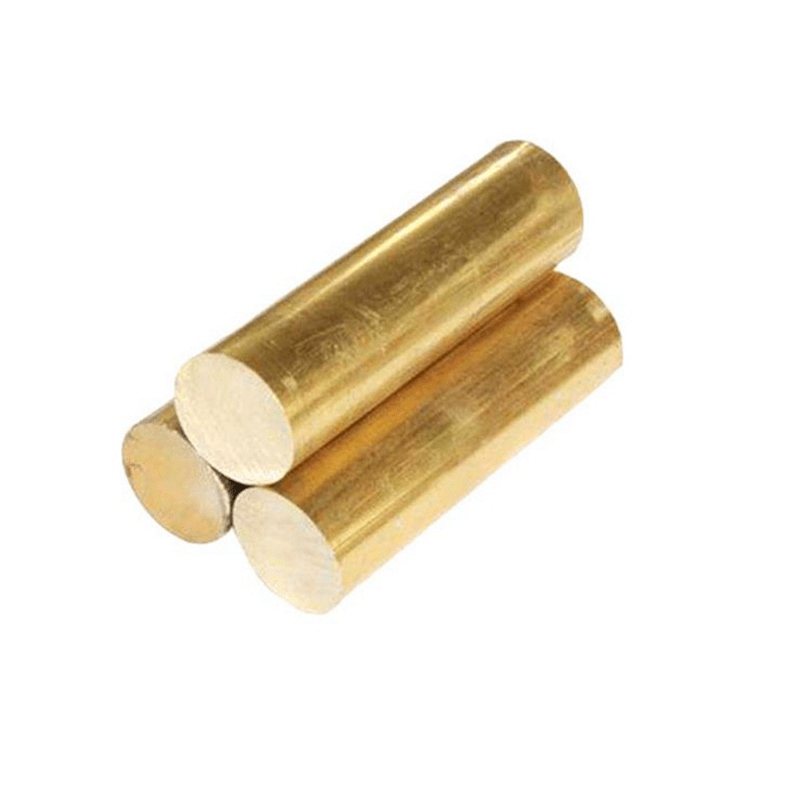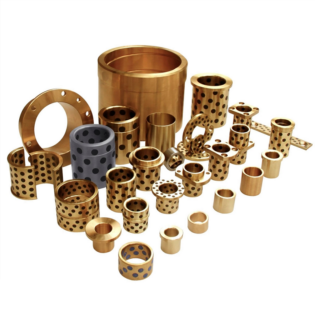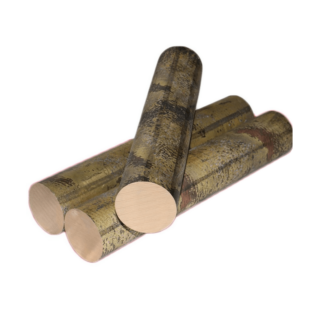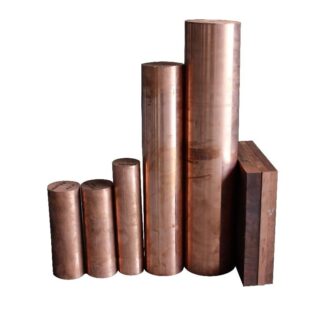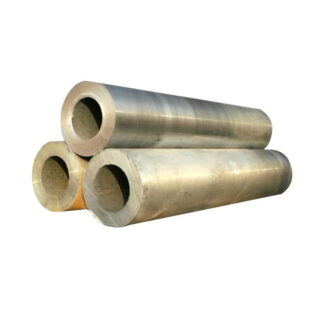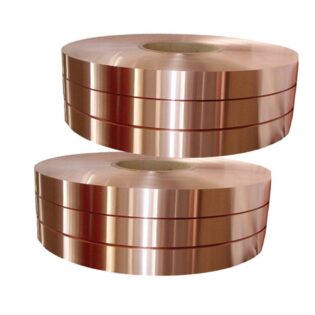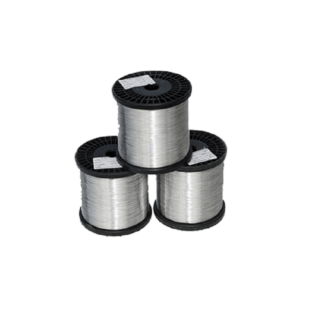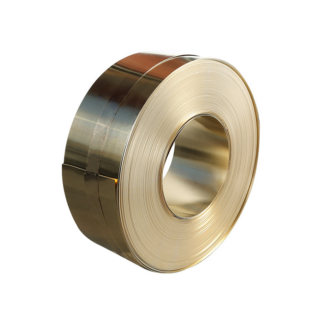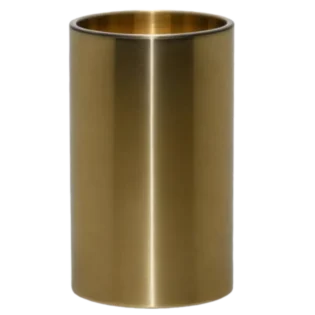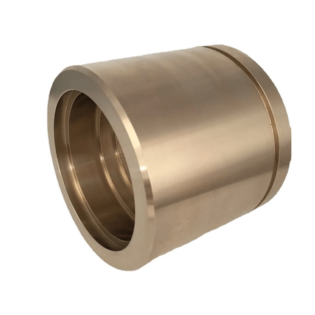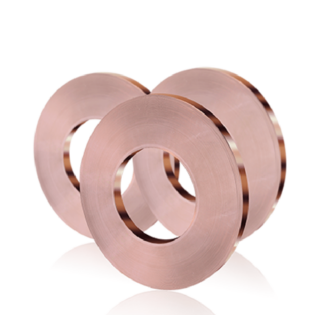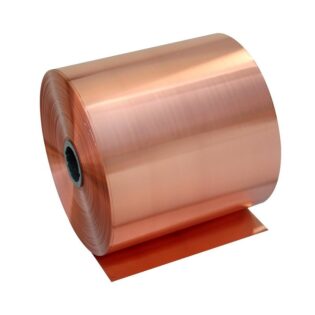C31400 PRODUKTBESCHREIBUNG:
Kommerzielle Bleibronze
FESTSTOFFE: 3/8″ bis 2″ Außendurchmesser
HEX: 3/8″ bis 2″ Außendurchmesser.
STANDARDLÄNGEN: 144″
Typische Anwendungen
BAUHARDWARE: Türgriffe
ELEKTRIK: Steckverbinder für Drähte und Kabel, elektrische Steckverbinder
BEFESTIGUNGSMITTEL: Muttern, Schrauben
INDUSTRIE: Beizkisten, Beizvorrichtungen, Beizgestelle, Schneckenmaschinenteile
- Im Bereich der Zerspanung ist Bleimessing C31400 ein weit verbreitetes Material. Es verfügt über eine gute Schnittleistung und Verschleißfestigkeit und wird daher häufig bei der Herstellung hochpräziser Teile und Werkzeuge eingesetzt. Im Folgenden werden die Verarbeitungseigenschaften, Anwendungsbereiche und die Verarbeitung und Optimierung von Bleimessing C31400 erläutert.
Verarbeitungseigenschaften von Bleimessing C31400
Bleimessing C31400 ist ein Legierungsmaterial aus Kupfer, Blei, Zink und anderen Elementen. Dieses Material hat eine geringe Härte und ist leicht zu bearbeiten. Darüber hinaus verfügt Bleimessing C31400 über eine hervorragende Schneidleistung und kann mit hohen Geschwindigkeiten verarbeitet werden, wodurch die Produktionseffizienz verbessert wird.
Anwendungsgebiete von C31400 Bleimessing
Da Bleimessing C31400 über gute Verarbeitungseigenschaften und mechanische Eigenschaften verfügt, wird es häufig bei der Herstellung hochpräziser Teile und Werkzeuge verwendet. Beispielsweise können damit Präzisionsteile wie Schneidwerkzeuge für Werkzeugmaschinen, Messwerkzeuge, Instrumente und Uhren hergestellt werden. Darüber hinaus wird Bleimessing C31400 auch häufig im elektrischen Bereich verwendet, beispielsweise bei der Herstellung leitfähiger Komponenten und Anschlüsse.
Verarbeitungsverfahren für Bleimessing C31400
Zu den Bearbeitungsmethoden von C31400-Bleimessing gehören hauptsächlich Fräsen, Drehen und Bohren. Bei der Bearbeitung müssen Sie auf folgende Punkte achten:
1. Wählen Sie das entsprechende Werkzeugmaterial und den entsprechenden Werkzeugwinkel aus. Aufgrund der hervorragenden Schneidleistung von Bleimessing C31400 können für die Bearbeitung Hartmetall-Schneidwerkzeuge oder Hochleistungs-Schnellarbeitsstahl-Schneidwerkzeuge verwendet werden. Gleichzeitig muss auch die Auswahl des Werkzeugwinkels an die tatsächliche Situation angepasst werden.
2. Kontrollieren Sie Schnittgeschwindigkeit und Vorschubmenge. Bei der Bearbeitung von C31400-Bleimessing führen eine zu hohe Schnittgeschwindigkeit und Vorschubgeschwindigkeit zu einem erhöhten Werkzeugverschleiß und beeinträchtigen die Bearbeitungsqualität und -genauigkeit. Daher ist es notwendig, die geeignete Schnittgeschwindigkeit und Vorschubgeschwindigkeit entsprechend der tatsächlichen Situation zu wählen.
3. Kühlmittel verwenden. Der Einsatz von Kühlmittel während der Bearbeitung kann die Schnitttemperaturen senken, den Werkzeugverschleiß und die Verformung des Werkstücks verringern.
Optimierungsmaßnahmen für Bleimessing C31400
Um die Verarbeitungseffizienz und Produktqualität von C31400-Bleimessing zu verbessern, können folgende Optimierungsmaßnahmen ergriffen werden:
1. Wärmebehandlung durchführen. Die Härte und Verschleißfestigkeit von Bleimessing C31400 kann durch Wärmebehandlung verbessert werden, wodurch die Schneidleistung verbessert wird.
2. Beschichtungstechnologie nutzen. Durch die Beschichtungstechnologie kann eine Schicht aus verschleißfestem Material auf der Oberfläche des Werkzeugs gebildet werden, um die Lebensdauer und Schneidleistung des Werkzeugs zu verbessern.
3. Nutzen Sie intelligente Verarbeitungstechnologie. Durch den Einsatz intelligenter Verarbeitungstechnologie kann der Verarbeitungsprozess automatisch gesteuert und optimiert werden, um die Produktionseffizienz und Produktqualität zu verbessern.
Ähnliche oder gleichwertige Spezifikation
| CDA | ASTHMA | SAE | AMS | Bundes | Militär | Sonstiges |
|---|---|---|---|---|---|---|
| C31400 | B140 B140M | MIL-V-18436 |
Chemische Zusammensetzung
| Cu% | Pb% | Zn% | Fe% | In% | |||||||
|---|---|---|---|---|---|---|---|---|---|---|---|
Chemische Zusammensetzung gemäß ASTM B140/B140M-12 (2017) Hinweis: Cu + Summe der genannten Elemente, 99,6 % min. Einzelwerte stellen Maxima dar. | |||||||||||
| 87,50- 90,50 | 1,30- 2,50 | Rem. | 0.10 | 0.70 | |||||||
Bearbeitbarkeit
| Kupferlegierung UNS Nr. | Bearbeitbarkeitsbewertung | Dichte (lb/in3 bei 20 °C) |
|---|---|---|
| C31400 | 80 | 0.319 |
Mechanische Eigenschaften
C31400
H02 Halbhart
GRÖSSENBEREICH: 1/2″ DURCHMESSER UND UNTER
| Zugfestigkeit, min | Streckgrenze, bei 0,5 % Dehnung unter Last, min | Dehnung, in 2 Zoll oder 50 mm min | Rockwell-Härte „B“. | Bemerkungen | ||
|---|---|---|---|---|---|---|
| ksi | MPa | ksi | MPa | % | typische HRB | |
| 50 | 345 | 30 | 205 | 7 | 61 | |
GRÖSSENBEREICH: ÜBER 1/2″ DURCHMESSER BIS 1″ INKLUSIVE
| Zugfestigkeit, min | Streckgrenze, bei 0,5 % Dehnung unter Last, min | Dehnung, in 2 Zoll oder 50 mm min | Rockwell-Härte „B“. | Bemerkungen | ||
|---|---|---|---|---|---|---|
| ksi | MPa | ksi | MPa | % | typische HRB | |
| 45 | 310 | 27 | 185 | 10 | 61 | |
GRÖSSENBEREICH: ÜBER 1″ DURCHMESSER
| Zugfestigkeit, min | Streckgrenze, bei 0,5 % Dehnung unter Last, min | Dehnung, in 2 Zoll oder 50 mm min | Rockwell-Härte „B“. | Bemerkungen | ||
|---|---|---|---|---|---|---|
| ksi | MPa | ksi | MPa | % | typische HRB | |
| 40 | 275 | 25 | 170 | 12 | 58 | |
C31400
H04 Schwer
GRÖSSENBEREICH: 2″ DURCHMESSER UND WENIGER
| Zugfestigkeit, min | Streckgrenze, bei 0,5 % Dehnung unter Last, min | Dehnung, in 2 Zoll oder 50 mm min | Rockwell-Härte „B“. | Bemerkungen | ||
|---|---|---|---|---|---|---|
| ksi | MPa | ksi | MPa | % | typische HRB | |
| 53 | 365 | 40 | 275 | 6 | 65 | |
Physikalische Eigenschaften
Physikalische Eigenschaften, bereitgestellt von CDA | |||||||||||
| US-üblich | Metrisch | ||||||||||
|---|---|---|---|---|---|---|---|---|---|---|---|
| Schmelzpunkt – Flüssigkeit | 1900 °F | 1038 °C | |||||||||
| Schmelzpunkt – Solidus | 1850 °F | 1010 °C | |||||||||
| Dichte | 0.319 lb/Zoll3 bei 68 ° F | 8,83 g/cm3 bei 20 °C | |||||||||
| Spezifisches Gewicht | 8,83 | 8,83 | |||||||||
| Elektrische Leitfähigkeit | 42 % IACS bei 68 °F | 0.246 MegaSiemens/cm bei 20 °C | |||||||||
| Wärmeleitfähigkeit | 104 Btu/sq ft/ft h/°F bei 68 °F | 180 W/m bei 20 °C | |||||||||
| Wärmeausdehnungskoeffizient 68-572 | 10.2 ·10-6 pro °F (68-572 °F) | 17,6 ·10-6 pro °C (20-300 °C) | |||||||||
| Spezifische Wärmekapazität | 00,09 Btu/lb/°F bei 68 °F | 377,1 J/kg bei 20 °C | |||||||||
| Elastizitätsmodul bei Spannung | 17000 ksi | 117212 MPa | |||||||||
| Steifigkeitsmodul | 6400 ksi | 44127 MPa | |||||||||
Herstellungseigenschaften
Herstellungseigenschaften bereitgestellt von CDA | |||||||||||
| Technik | Eignung | ||||||||||
|---|---|---|---|---|---|---|---|---|---|---|---|
| Löten | Exzellent | ||||||||||
| Hartlöten | Gut | ||||||||||
| Autogenschweißen | Nicht empfohlen | ||||||||||
| Schutzgasschweißen | Nicht empfohlen | ||||||||||
| Lichtbogenschweißen mit beschichtetem Metall | Nicht empfohlen | ||||||||||
| Punktschweißen | Nicht empfohlen | ||||||||||
| Nahtschweißen | Nicht empfohlen | ||||||||||
| Stumpfschweißen | Gerecht | ||||||||||
| Fähigkeit zur Kaltbearbeitung | Gut | ||||||||||
| Fähigkeit zur Warmumformung | Arm | ||||||||||
| Bearbeitbarkeitsbewertung | 80 | ||||||||||
Thermische Eigenschaften
Thermische Eigenschaften bereitgestellt von CDA *Die Temperatur wird in Fahrenheit gemessen. | |||||||||||
| Behandlung | Minimum* | Maximal* | |||||||||
|---|---|---|---|---|---|---|---|---|---|---|---|
| Glühen | 800 | 1200 | |||||||||
